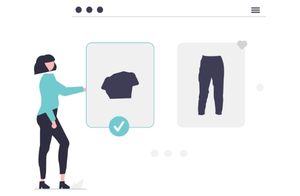Or go to our Shopify Theme Detector directly
How Does Dropshipping Work?
Last modified: September 21, 2023

Are you looking into starting your first or next business and are interested in dropshipping for the first time? Are you confused and wondering how dropshipping works? Well here is a list of questions that should help you understand more about dropshipping and the benefits to you and others.
| # | Name | Image | |
|---|---|---|---|
| 1 |

|
AutoDS
|
|
| 2 |
|
Spocket-World Wide Suppliers
|
|
| 3 |

|
Syncee - Global Dropshipping
|
|
| 4 |

|
Printful-Sell Printed and Embroidered Items
|
|
| 5 |

|
Sup Dropshipping
|
|
| 6 |

|
DSers-AliExpress Dropshipping
|
|
| 7 |

|
Zendrop - Dropshipping & POD
|
|
| 8 |

|
Dropshipman: Dropshipping & POD
|
|
| 9 |

|
AO - AliExpress Dropshipping by FireApps
|
|
| 10 |

|
Trendsi - Fashion Dropshipping
|
|
| 11 |

|
CJdropshipping
|
|
| 12 |

|
DropCommerce
|
|
| 13 |

|
Modalyst-Sell Brand Name Products
|
|
| 14 |

|
Ali Orders-Fulfill Orders Easily
|
|
| 15 |

|
Blanka - Private Label Beauty
|
|
| 16 |

|
Dropified-Automate Your Dropshipping Business
|
|
| 17 |

|
ProductPro
|
|
| 18 |

|
Spreadr App
|
|
| 19 |

|
Importify
|
|
| 20 |

|
Inventory Source
|
|
| 21 |

|
Roxie
|
|
| 22 |

|
Fulfillbot: Dropshipping Agent
|
|
| 23 |

|
KakaClo
|
|
| 24 |

|
Oberlo-Get the Best Produtcts for Your Site
|
|
|
Show More
|
|||
How does Dropshipping Work?
There are three parties within a dropshipping process. The customer is the person buying the products, the seller is the website owner who advertises and takes payments for the products and the merchant, the person who stocks and fulfills the order.
When a customer makes a purchase, the seller takes the payment from the customer. They then place the order with the merchant, such as Spocket, and give them the shipping details. The merchant then packages the products and sends them to the customer with the branding of the seller, they also take payment for their share of the sale.
It is a simple process that works very well and there are numerous benefits.
What are the Benefits for the Seller?
There are numerous benefits for the seller. First of all, it reduces the barrier to entry because the seller doesn’t need to buy lots of stock. They can also save time and money by not having to store stock, do quality checks and take time out to fulfill orders. This allows them more time to market the products and manage other aspects of their business.
What are the Benefits for the Merchant?
The merchant also benefits because they don’t need to have a sales team to sell their products. They can use networks to advertise their products and get others to sell the products. They can collect the money that is owed to them from the seller and send out the product using the branding of the seller. With enough merchants selling their product, they can increase revenue, even if they lower the base price of the product.
What does the Customer See?
The customer is only made aware of the seller. They do not know the merchant will ship all orders out using the branding details of the seller. This prevents confusion of the customer receiving packages from brands that they might not know about.
The customer can also benefit from more choice. The same dropshipping product can be sold on numerous websites, so they can use coupons, discounts and price comparison to save money and ensure they get the product they want at a price they’re happy with (done via dropshipping apps).
How Hard is Dropshipping?
Dropshipping is no harder than any other business. It takes just a website and good marketing automation to get going. Many dropshipping businesses can start to build a strong revenue very quickly and never touch a product.
Do Products need One Merchant?
Dropshippers can use multiple merchants on their website to stock their website with products. If a customer purchases from several merchants, orders can be made to each and deliveries arranged. However, some businesses can collate all the orders together and send them as one to the customer with only a day’s delay.
Understanding the Dropshipping Model
Dropshipping is a unique retail model where the retailer doesn’t keep the products they sell in stock. Instead, when a customer places an order, the retailer purchases the item from a third party—usually a wholesaler or manufacturer—and has it shipped directly to the customer. This means the retailer never sees or handles the product, acting as a middleman between the supplier and the customer.
The Dropshipping Process Simplified
1. Customer Places an Order
The customer chooses a product from the retailer’s online store and completes the purchase.
2. Order Forwarded to Supplier
The retailer then sends the order details to their dropshipping supplier.
3. Supplier Handles Fulfillment
The supplier packs the product and ships it directly to the end customer on behalf of the retailer.
4. Retailer Manages Customer Service
Despite not handling the product, the retailer is responsible for customer service and any related queries or issues.
This process eliminates the need for the retailer to invest in inventory, reducing overhead costs and risks. However, it’s essential to choose reliable suppliers to ensure product quality and timely delivery.
Potential Challenges in Dropshipping
While dropshipping offers numerous benefits, it’s not without challenges:
- Competition: The ease of starting a dropshipping business means the market can be saturated, making it essential to differentiate your brand and products.
- Dependency on Suppliers: Retailers rely heavily on their suppliers for product quality, stock availability, and timely delivery. Any issues on the supplier’s end can affect the retailer’s reputation.
- Profit Margins: Typically, dropshipping has lower profit margins compared to traditional retail models. Retailers need to strike a balance between competitive pricing and sustainable profit margins.
Tips for Success in Dropshipping
1. Research and Choose Reliable Suppliers
Partnering with trustworthy suppliers ensures product quality and timely delivery.
2. Focus on Niche Markets
Specializing in specific product categories can help differentiate your store from competitors.
3. Prioritize Customer Service
Even if you don’t handle the products, providing excellent customer service can set your store apart and build customer loyalty.
4. Stay Updated with Market Trends
Regularly update your product listings based on market demand and trends.
Conclusion: How Does Dropshipping Work
Above is the simple answer to how dropshipping works. It is an easy process that many people will understand and you might have experienced without knowing about it.
Keep on reading about Dropshipping on Shopify. For example What is a Dropshipping Business and Is Dropshipping Worth it?. Both part of our Shopify Dropshipping Apps and Shopify Dropshipping Themes lists. You can read more about Dropshipping on Shopify with our ultimate Dropshipping on Shopify guide.
-
Can I dropship on platforms like Amazon?
Yes, but there are specific guidelines to follow. For instance, the retailer must be clearly identified on all packaging and shipping documents, ensuring the customer cannot identify the product as coming from a third party.
-
How do profit margins in dropshipping compare to traditional retail?
Dropshipping typically offers profit margins of 15%–20%, while traditional retail can have margins ranging from 30%–40%. The difference arises due to bulk purchasing in traditional retail and the absence of inventory costs in dropshipping.
-
Is dropshipping legal?
Yes, dropshipping is a legal business model. However, retailers should ensure they adhere to all local and national regulations and guidelines.





 PageFly Landing Page Builder
PageFly Landing Page Builder  Shopify
Shopify  SEMrush
SEMrush  Website Maintenance
Website Maintenance  UpPromote
UpPromote